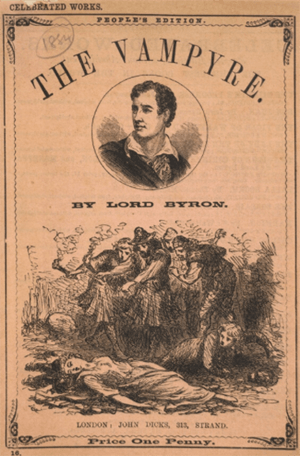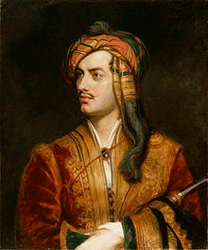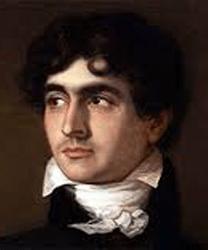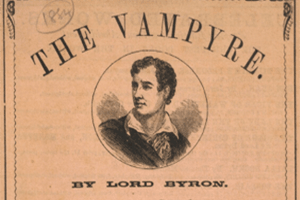The Worlds First Piece of Vampire Fiction
 Who would ever have
thought that the two most enduring
monsters of our time
would both be created on the
same rainy holiday in Switzerland,
but in 1816 when the poets
Byron and Shelley both
rented villas on the shore of
Lake Geneva that’s exactly what
happened. Shelley, with his wife
Mary and stepsister Claire,
rented a chalet at Montalegre,
while Lord Byron and his personal
physician Dr Polidori,
rented Villa Diodati.
Who would ever have
thought that the two most enduring
monsters of our time
would both be created on the
same rainy holiday in Switzerland,
but in 1816 when the poets
Byron and Shelley both
rented villas on the shore of
Lake Geneva that’s exactly what
happened. Shelley, with his wife
Mary and stepsister Claire,
rented a chalet at Montalegre,
while Lord Byron and his personal
physician Dr Polidori,
rented Villa Diodati.
Because of the heavy rain on the trip, the group spent many tedious hours indoors. They would amuse themselves reading to each other aloud and drinking large quantities of laudanum, which was a heady combination of brandy and opium.
They read from a book entitled, Fantasmagoriana by Jean Baptiste Benoit Eyries. The book was a collection of ghost stories which had been translated from German into French. The book included a story called "Les Portraits de Famille," in which each member of a family had to compose a supernatural tale. This gave Byron, Shelley and their guests an idea, and they decided they would do the same.
The two great poets failed to produce anything of any note. Shelley tried, but failed to write a short story about a strange event that happened early on in his life. Byron managed to compose half a story, about two men who decided to travel to Greece. Whilst there, one of the men died of an unknown disease. The other man returned to England to find his friend alive and seducing his sister. Mary Shelley’s story would eventually become the very first novel about the crazed scientist, Frankenstein. While Polidori’s tale was about a Swiss patriot’s incestuous relationship with his sister.
Polidori, however, was far more interested in Byron’s story of the undead lover, and he began work on his version of the story. The main character in the story was, Lord Ruthven, and Polidori modelled this character very heavily on Byron himself.
Polidori never published his work. In fact he put it away and completely forgot about it. However, three years later it somehow found its way into an edition of English publication, New Monthly Magazine, in April 1819, claiming Lord Byron as the author. Whether or not this was deliberate to cash in on Byron’s notoriety is not known, but it did guarantee the story was widely read.

Lord Byron

Dr. Polidori
Byron thought that Polidori had cheapened his original story, and was furious. Polidori was also furious, for he had not been asked about the publication or offered any money either. Belatedly, Polidori was paid thirty pounds.
Byron appended most of his version of the tale to his next poem, Mazeppa. He deliberately edited out the last section, in which Darvell returns from the dead, to underline the point that he had not written The Vampyre.
Polidori, author of the world’s first ever vampire novel died two years later in August 1821, at the age of 25. There was a suggestion of suicide, but the official coroner recorded a verdict of "Death by the visitation of God."
Originally published in Acrimony Magazine Issue #11 July 2004











